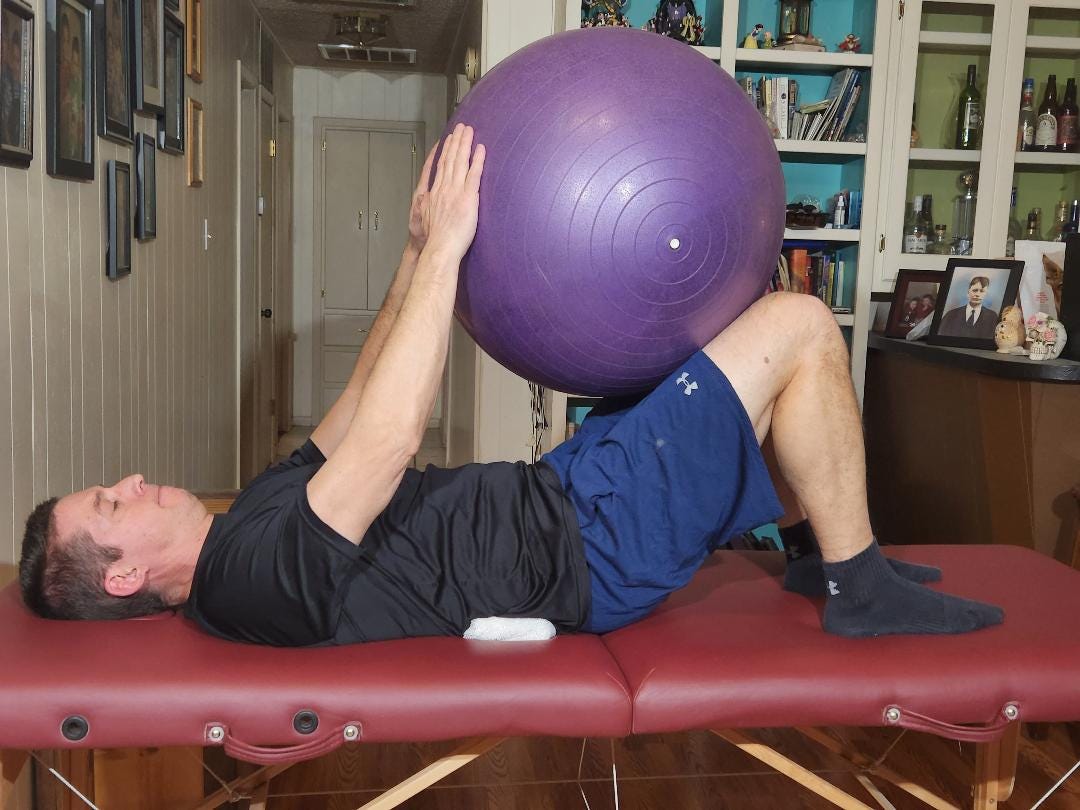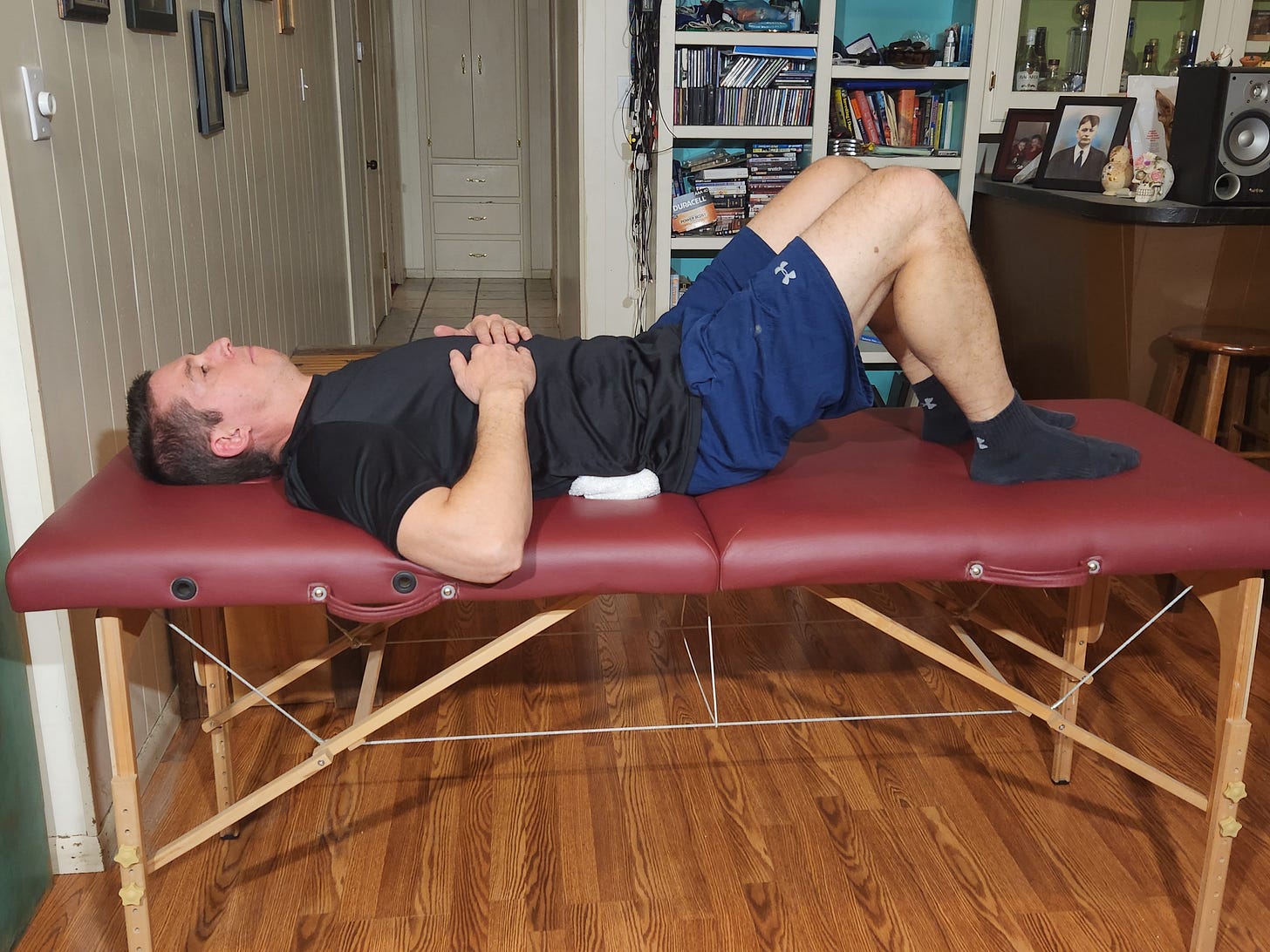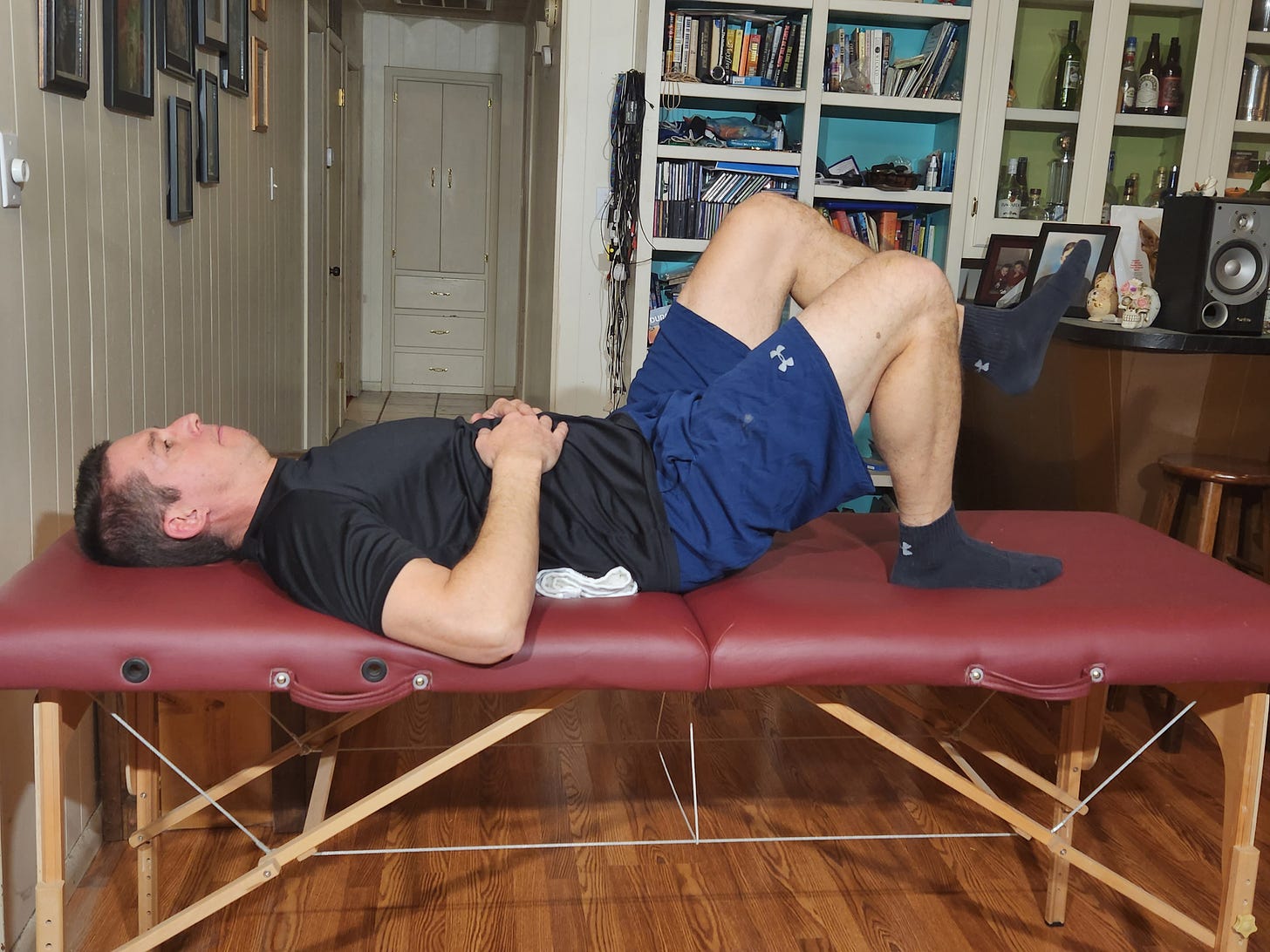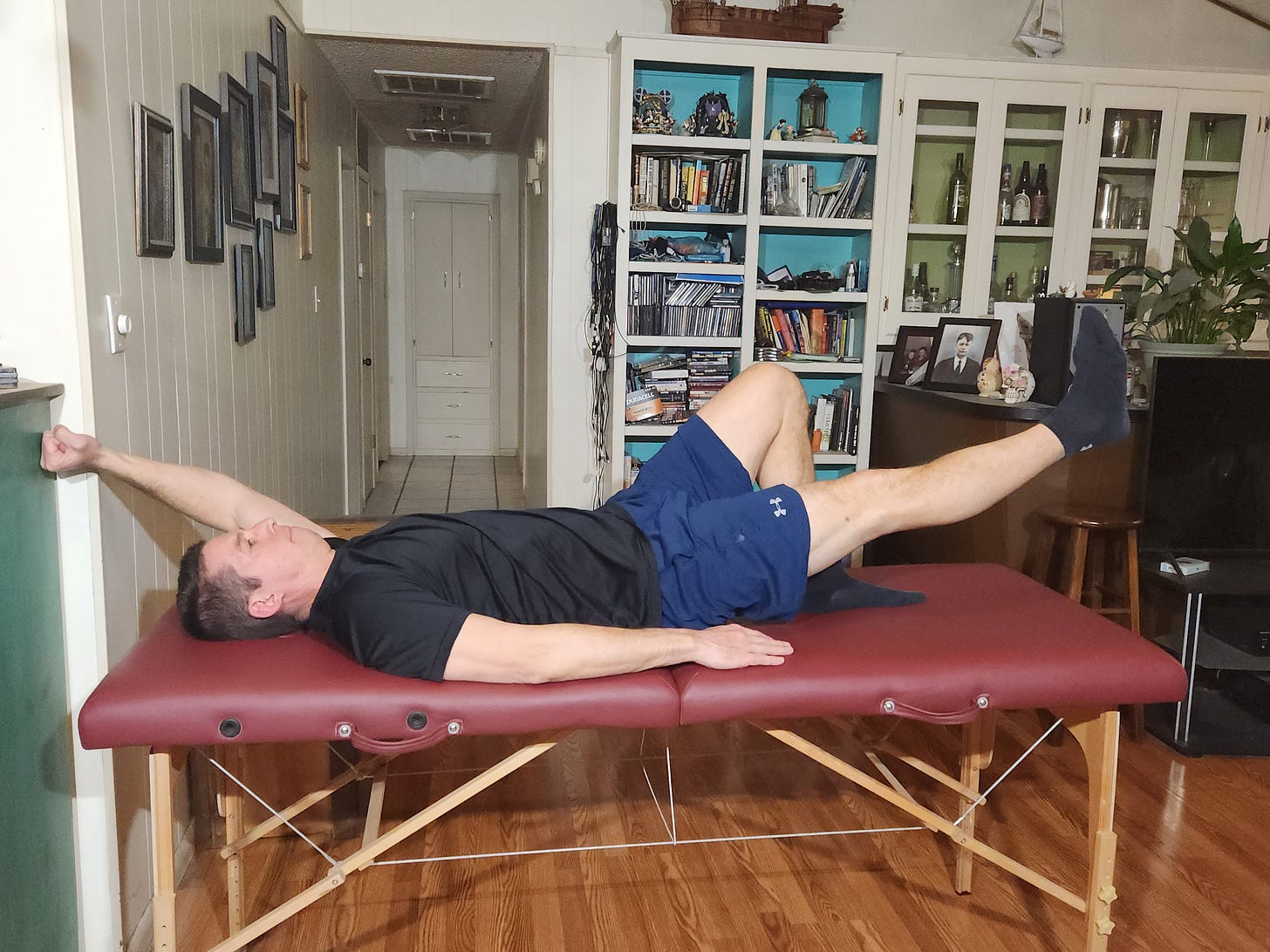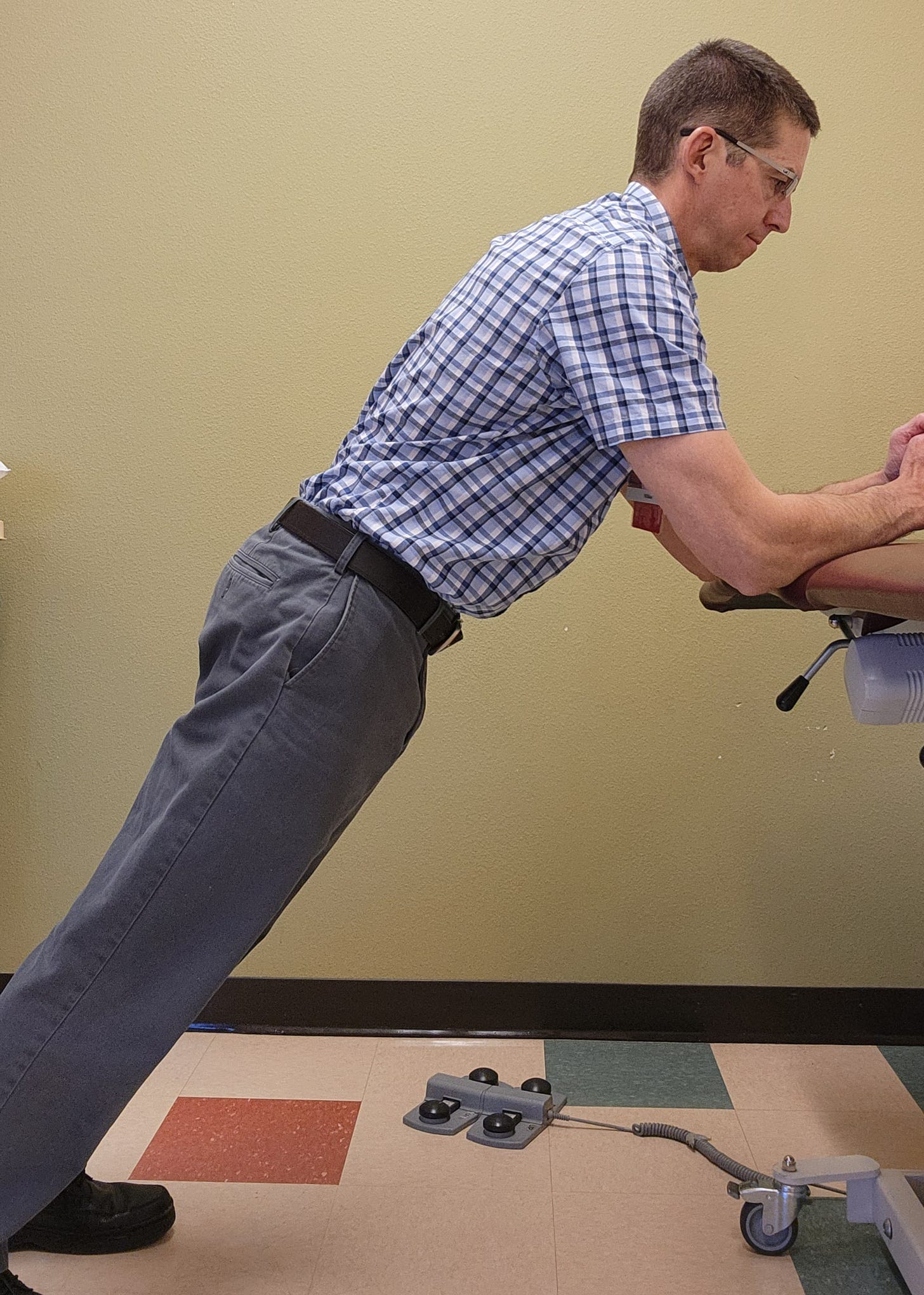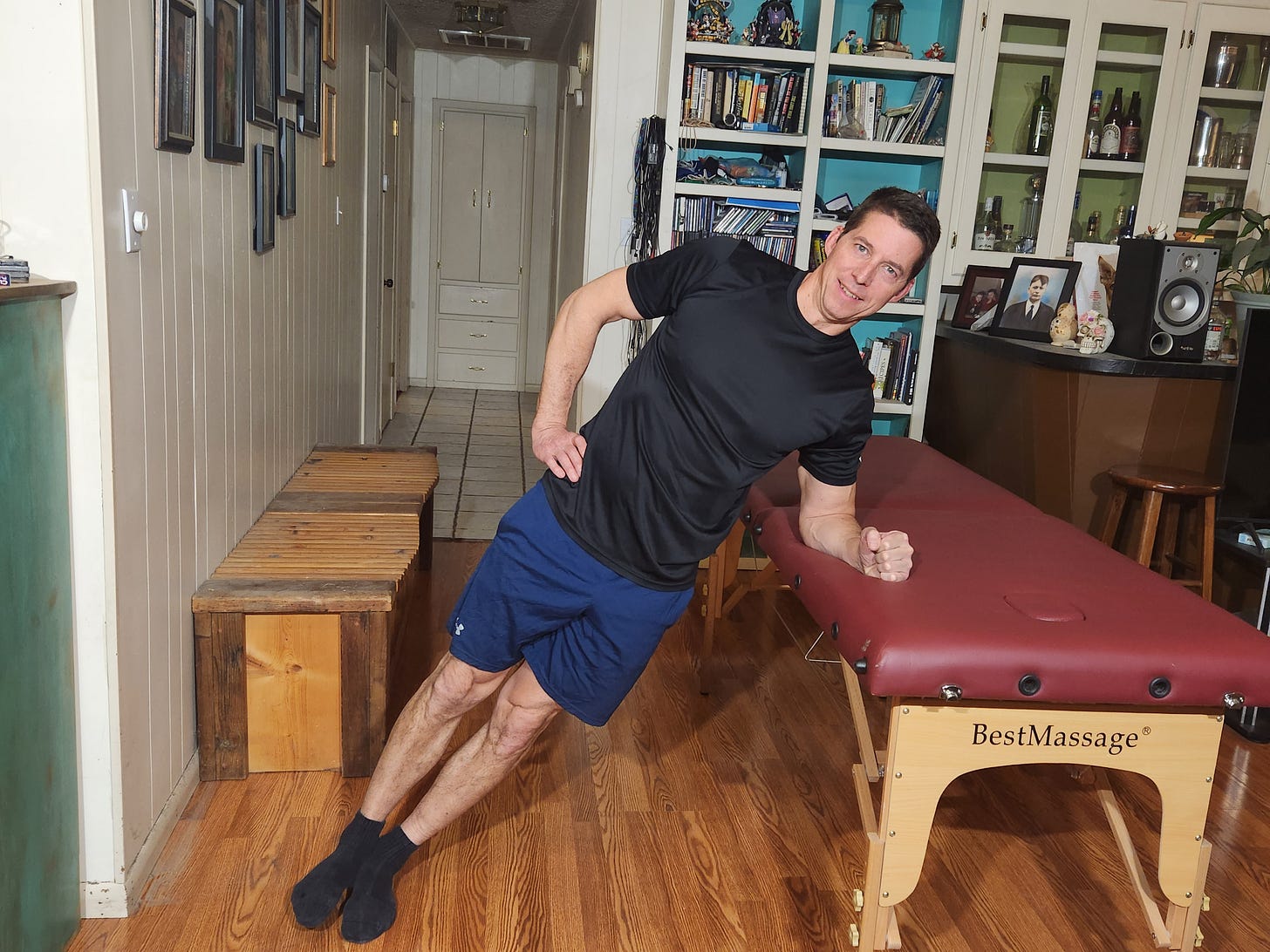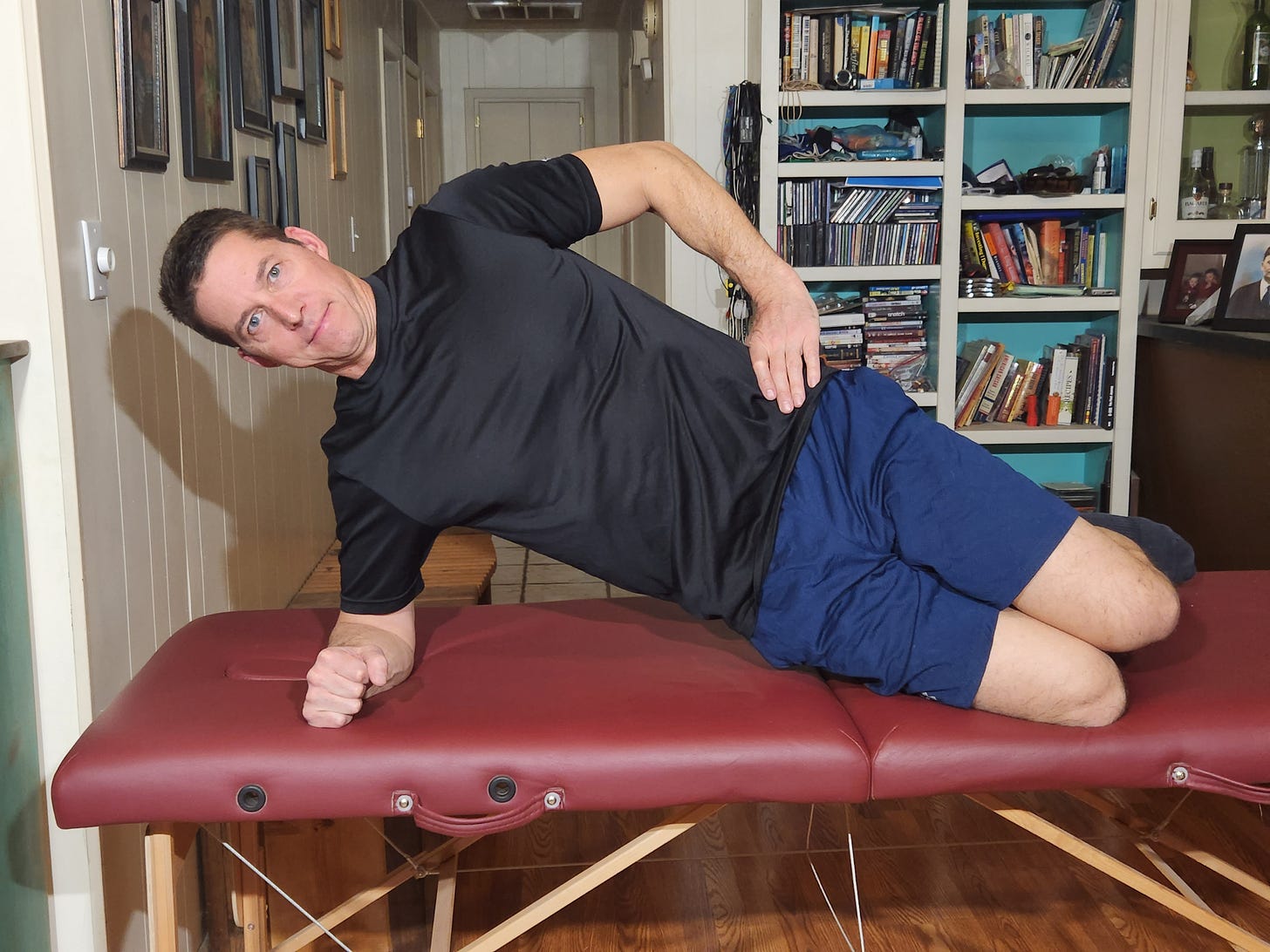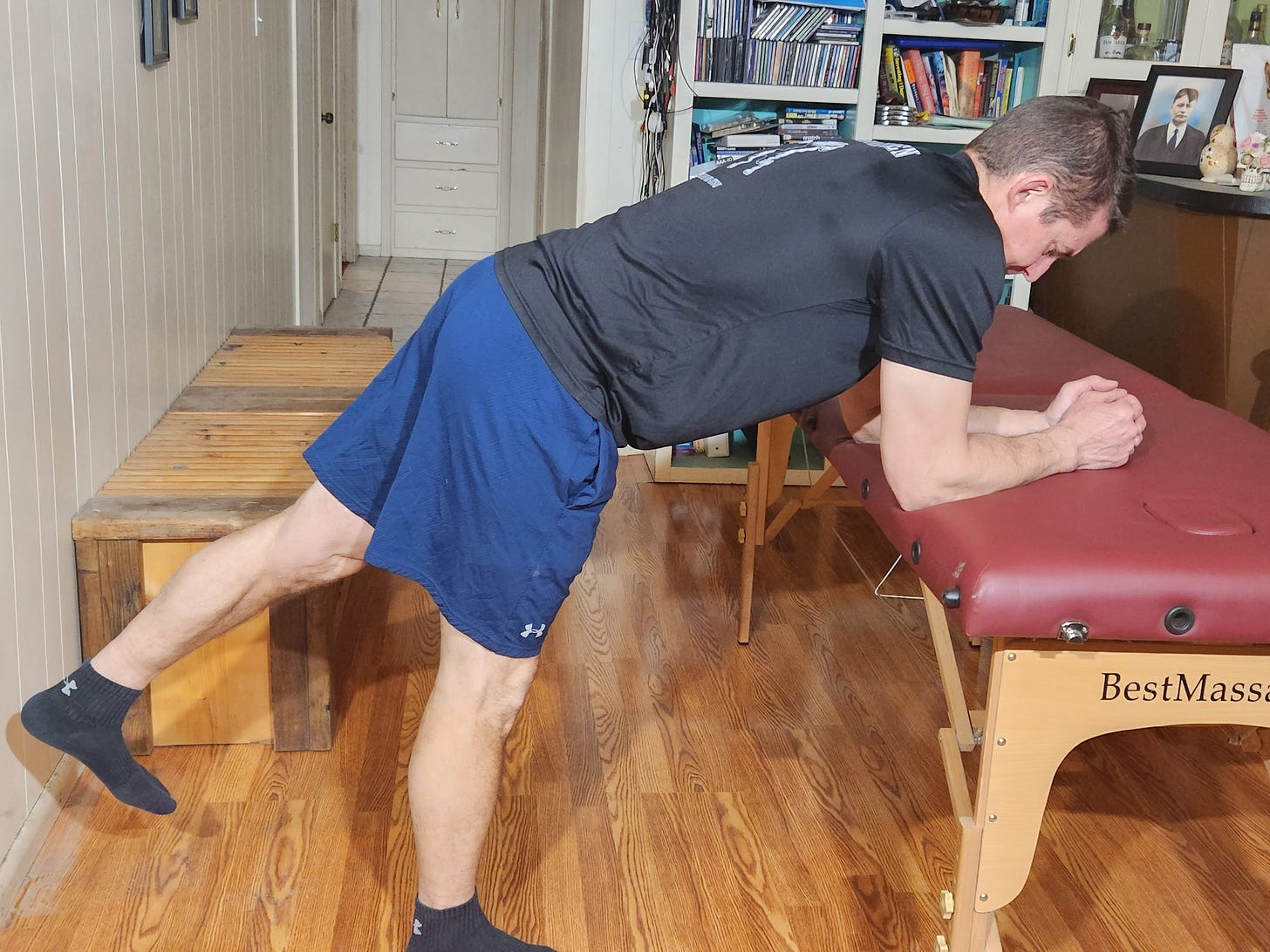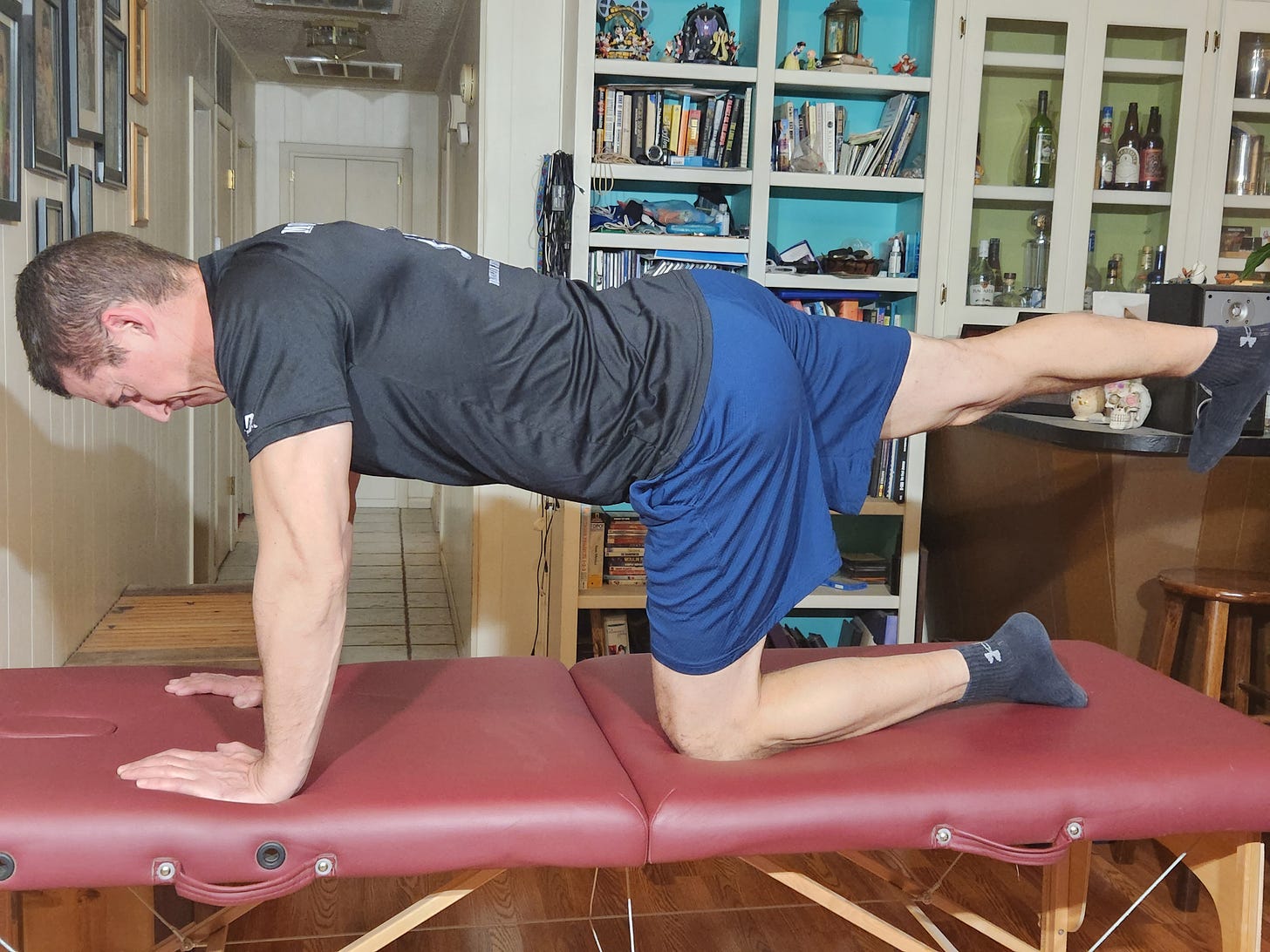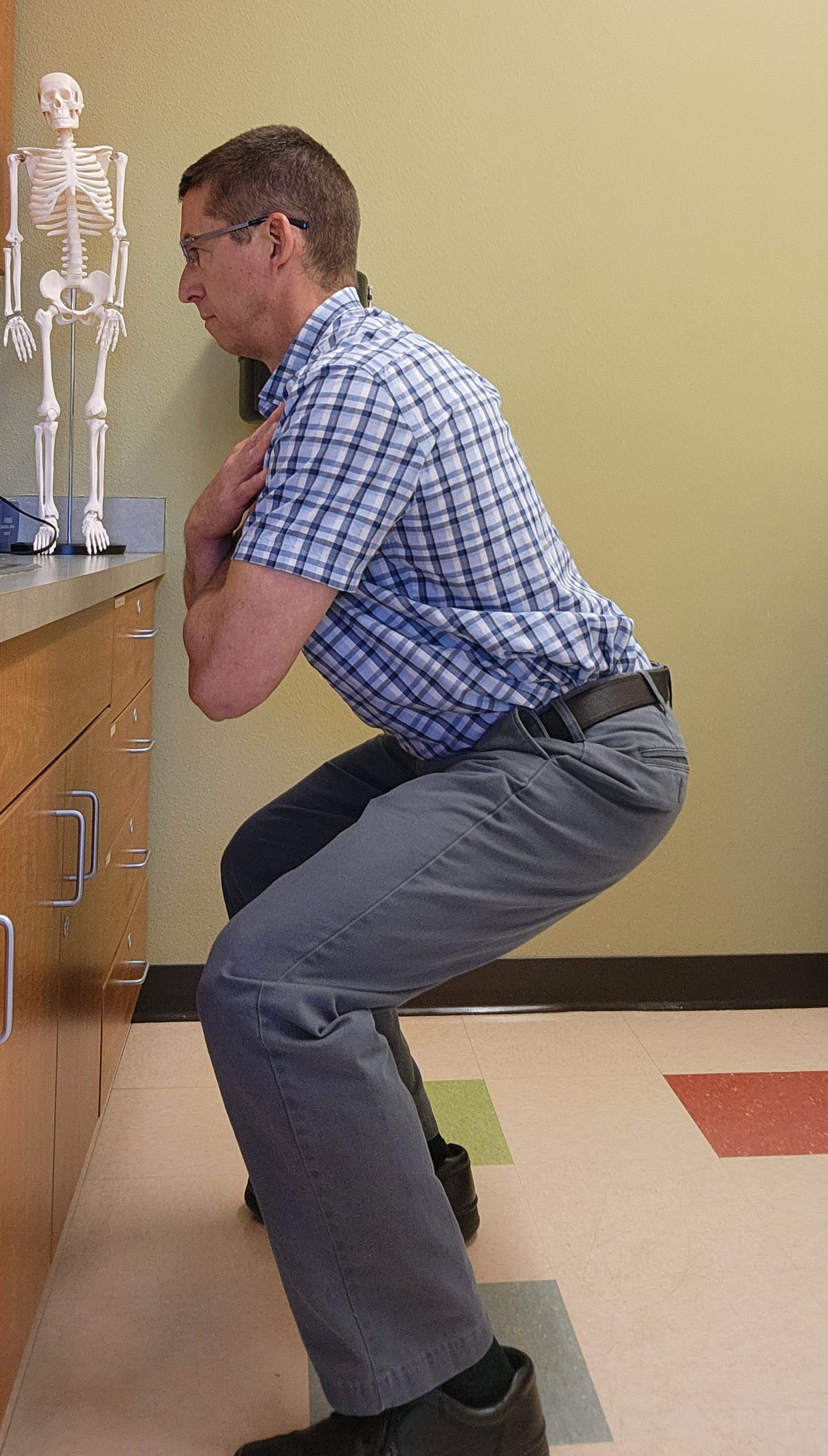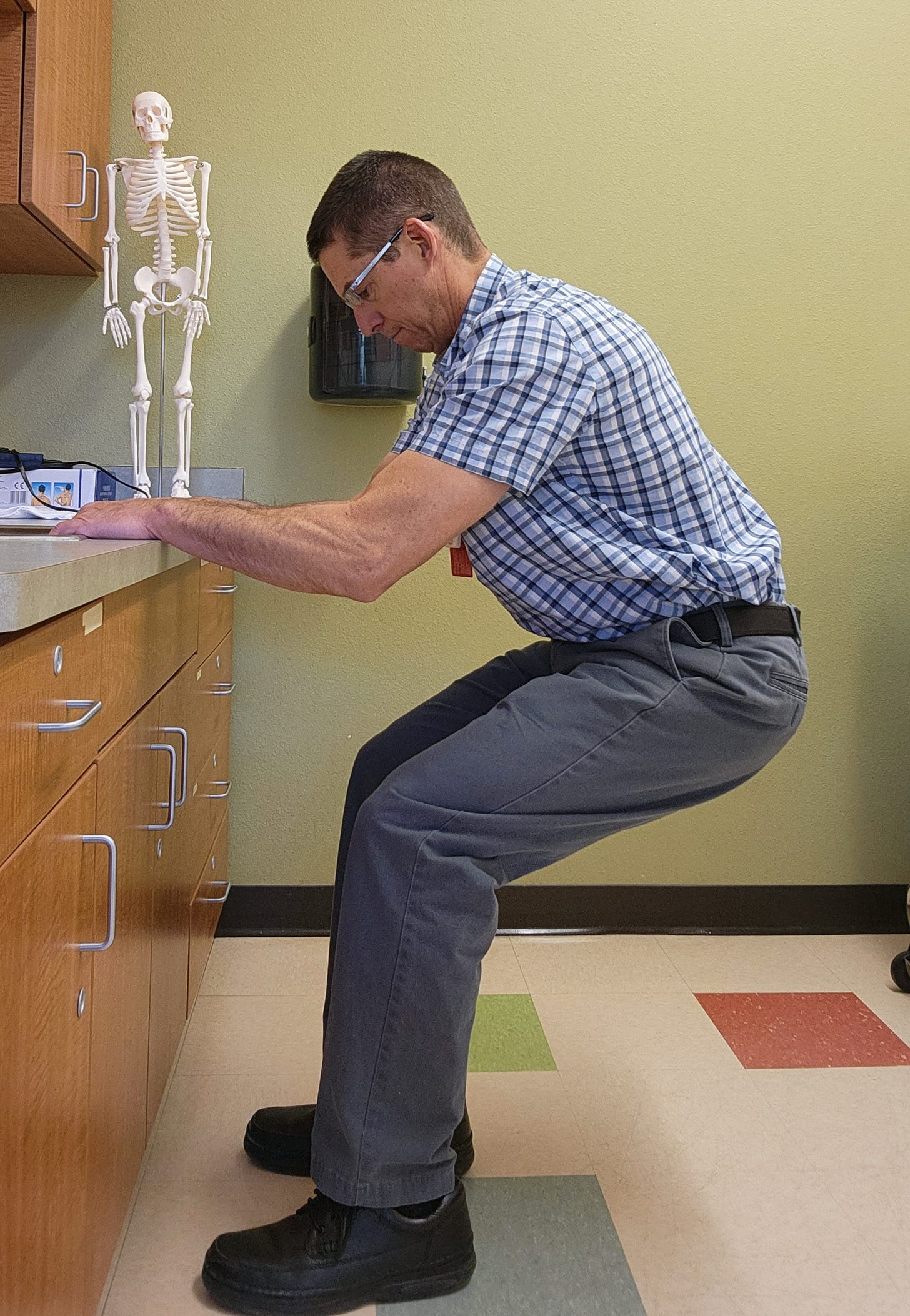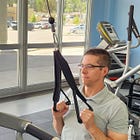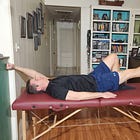This is not medical advice. Consult your doctor and therapist before attempting any of these exercises.
There should be no increase in back pain while performing these exercises. If there is an increase in back pain, stop immediately. Slow speed and perfect form are critical.
As we discussed in the previous article, improving back stabilization with core muscles, may help decrease back pain. The first step is to start contracting the abdominal muscles to stabilize the spine. We tilt into a towel to find a stable position, or neutral spine.
Try holding, and breathing, in this tilted position for 6-7 seconds. Rest 6-7 seconds in between. (It’s more like 7 “Mississippis”, because people count too fast, and just want it to be over with). This position is the basis for low back stabilization. As this becomes stronger, we start to slowly march the legs, alternating sides, while holding the tilt into the towel roll, the entire time.
If you let go of the tilt while the legs are in the air, you have lost stabilization. This coordinated maneuver takes practice. The slower the better. It should take 3-5 seconds to move each leg.
As your strength and stability improves, you can start to extend the leg out over the table, and add the opposite arm.
If these are too easy, you can add ankle and hand weights. Again, start slow. Slow speed and good form are critical. Try the exercise in the first photo up top. Push your arms into the ball to contract your abdominal muscles. Hold 7 seconds, relax 7 seconds, for 1-2 minutes.
Now that we have taught the “front” abdominals to work, it’s time for the side muscles of the trunk, or obliques. We use a standing side plank for this. The more horizontal you lie, the harder and more stressful this is on the back. Start near vertical, and then slowly walk out more horizontal, with no pain or loss of form. Hold 10-30 seconds on both sides, and repeat 2-3 times per side. Add sets as your stability improves.
If standing side planks are too easy, progress to side planks from the knees in the photo below.
Next we need to work the back muscles. Bent over leg extensions achieve this here.
If this is too easy, progress to hands and knees, and limb extensions. Start with legs first. Do not add the arms until the leg position is rock solid. If the body is swaying because the exercise is too hard, you have not secured back stabilization. Try holding this position 3-5 seconds, alternating sides for one minute.
Building stabilization also requires using that posture correctly while moving. Otherwise you have lost the benefit of all the back stabilization. Squatting with correct form, and protecting the back are critical.
Check out the video in this article, half way down in purple link; Google “Mike’s Home Exercise Substack Abdominal Training Wheels.”
And these other popular topics;




